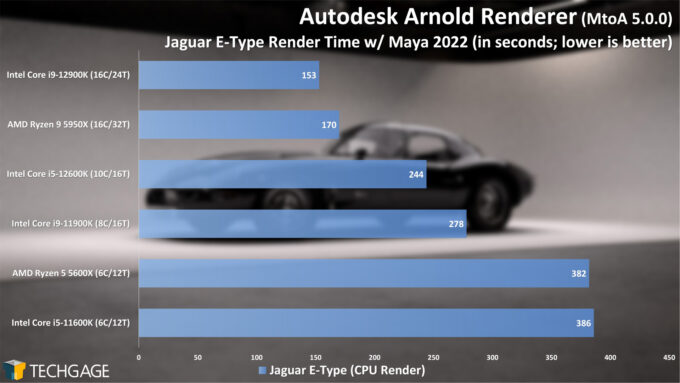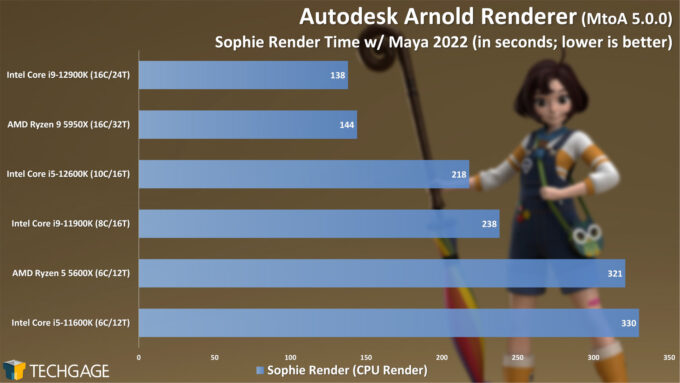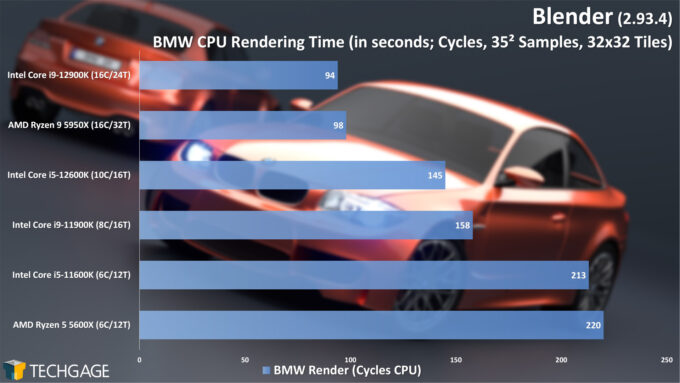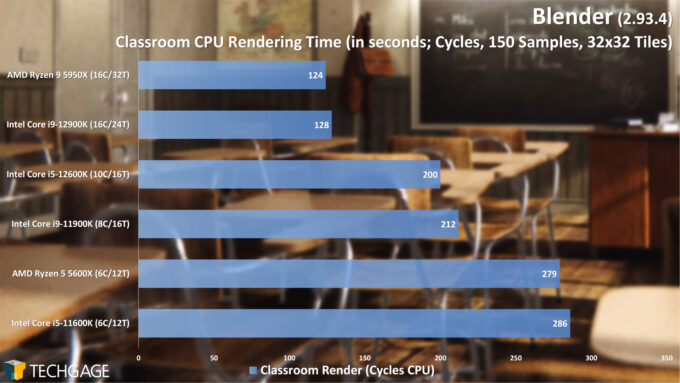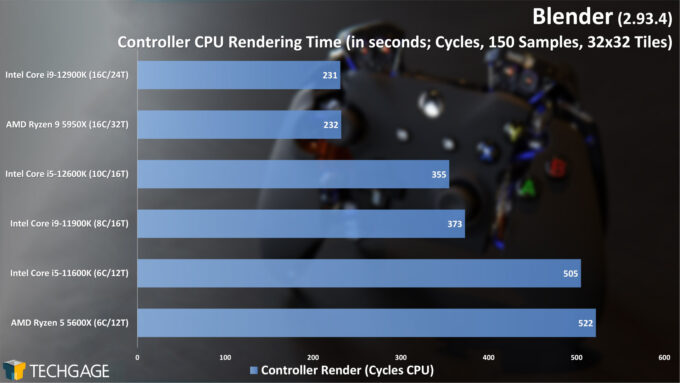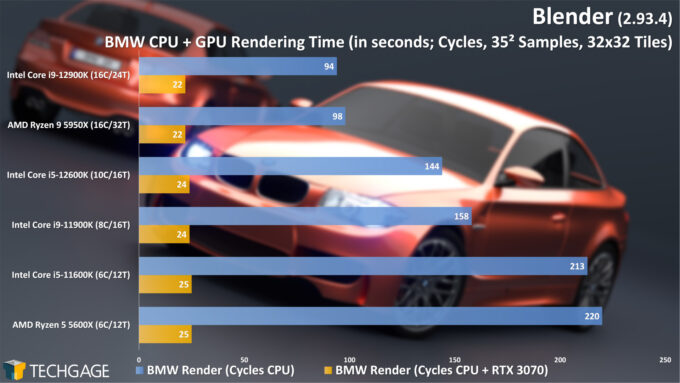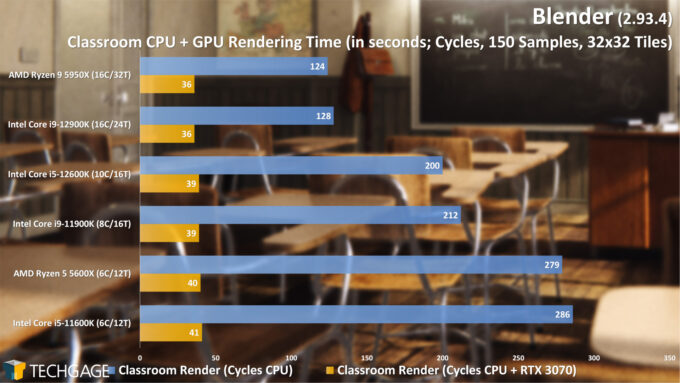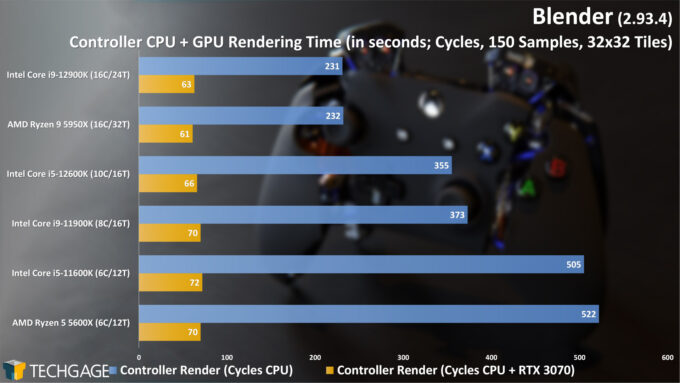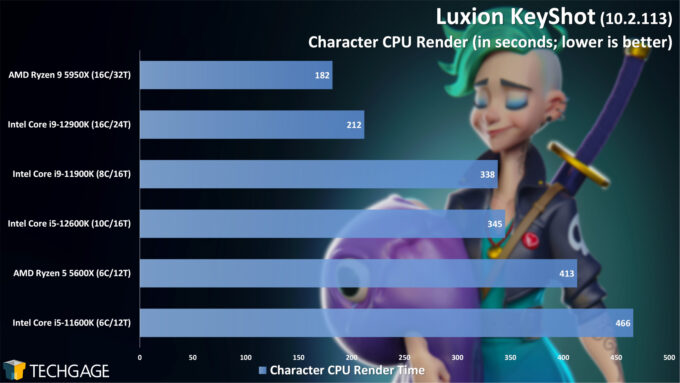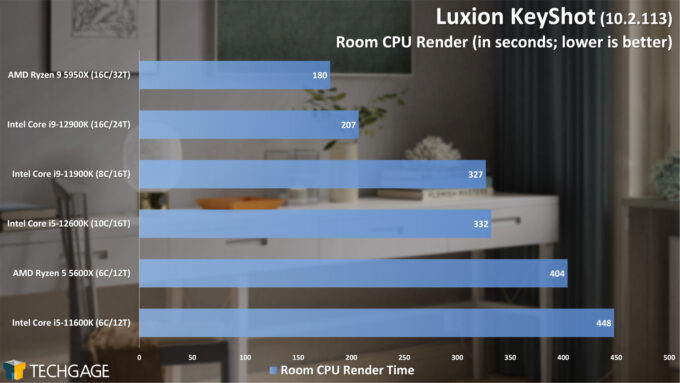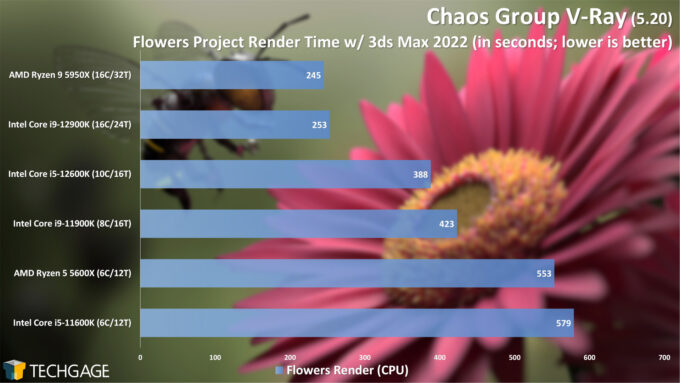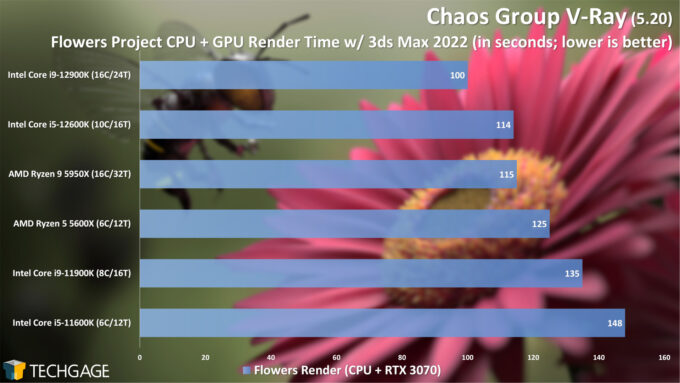- Qualcomm Launches Snapdragon 4 Gen 2 Mobile Platform
- AMD Launches Ryzen PRO 7000 Series Mobile & Desktop Platform
- Intel Launches Sleek Single-Slot Arc Pro A60 Workstation Graphics Card
- NVIDIA Announces Latest Ada Lovelace Additions: GeForce RTX 4060 Ti & RTX 4060
- Maxon Redshift With AMD Radeon GPU Rendering Support Now Available
Intel 12th-gen Core i9-12900K & i5-12600K Workstation Performance Review

Intel’s 12th-gen Core architecture represents a huge shift from previous designs, with ‘performance’ cores being teamed up with ‘efficient’ cores in launch models. For our first performance deep-dive, we’re going to put the i5-12600K and i9-12900K up against many encoding, rendering, and system benchmarks.
Page 5 – Rendering: Arnold, Blender, KeyShot, V-Ray
Arnold
With its unique architectural design, we really weren’t sure what to expect out of Intel’s 12th-gen Alder Lake chips in workloads that scale extremely well with additional cores. Could we possibly see the 8P+8E design of the 12900K beat out a traditional 16-core like the 5950X? Well, we have our answer thanks to the results above: “yes”.
It really is impressive just how fast these 12th-gen chips are in all of the workloads we’ve tested so far. With the original Zen, AMD helped make CPU-bound rendering tests interesting again, and it only became more interesting as higher core count chips were released. Now, Intel helps make it interesting by pairing performance and energy cores together to beat out AMD’s same-count native cores.
Let’s see if this trend continues:
Blender
With Blender, we’re seeing similar performance out of these chips as we did with Arnold, with Intel’s i9-12900K edging out the 5950X ever-so-slightly in the majority of tests. Notably, AMD did manage to win the Classroom render test, so overall, both chips perform pretty similarly, we must say.
What could change once a GPU is introduced?
If you ever needed proof that a graphics card can dramatically improve render times, then the above results should prove sufficient. Once again, Intel’s 12900K takes the top spot in the same projects as we saw in our CPU-only testing, but really – most of the end result is being helped by the GPU more than it is the CPU.
One thing the above results leave out is what things would look like if we used NVIDIA’s OptiX API instead of CPU or CUDA. As we’ve seen in the past, there are indeed times when CPU+GPU can beat out OptiX with a fast GPU, but it’s likely going to require many cores. You can peruse this yourself in our Blender 2.93 performance deep-dive.
We’re currently in the middle of benchmarking for the upcoming Blender 3.0 launch, so we’ll find out soon enough if the new Cycles X render engine boosts CPU performance as it does GPU performance.
KeyShot
KeyShot becomes the first rendering result that safely gives AMD’s Ryzen 9 5950X the lead, and we’d suspect that will be the case with most KeyShot projects, since we’ve generally seen nearly identical scaling with any project we’ve tested with.
While the 5950X beats out the 12900K here, the 12600K easily beats out the 5600X. Both chips have six high-performing cores, but those four additional cores with the 12600K clearly help out.
As with most of the results on this page so far, KeyShot does a good job highlighting the massive improvements Intel CPUs have seen going from 11th- to 12th-gen.
V-Ray
The above result looks similar to others we’ve seen on this page, but don’t worry, it’s about to get more interesting in a second. When identical core counts are involved, Intel has historically seemed to edge out AMD a bit in V-Ray, although in our CPU-only test here, the 5950X does manage to place ahead of the 12900K. But, with 16 high-performing cores, you’d expect that. What you might not expect is just how tight the delta is between that 16-core, and Intel’s 8P+8E design. Yet again, we can see enormous gains in performance from one generation of Intel CPU to the next.
Alright – let’s add a GPU to the mix:
We’ve seen countless examples over the years of how important a GPU can be to rendering performance, and V-Ray yet again backs that up. What’s interesting, though, is that while the CPU only render put the 5950X in the lead, the heterogeneous render gives an edge to both of the 12th-gen CPUs tested.
So far, we’ve seen Intel’s new chips perform extremely competitively in rendering, with the 12900K performing better against the 5950X than we were expecting. Because we like to be thorough, we have four more rendering tests on the following page, so let’s see if Intel can continue its seriously strong showing.
Support our efforts! With ad revenue at an all-time low for written websites, we're relying more than ever on reader support to help us continue putting so much effort into this type of content. You can support us by becoming a Patron, or by using our Amazon shopping affiliate links listed through our articles. Thanks for your support!




